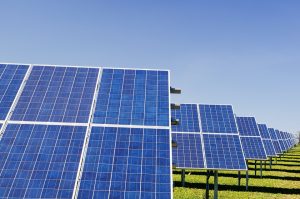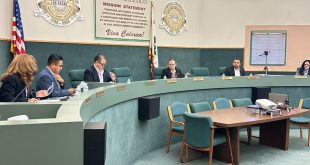More than a decade after the County of Imperial began to allow solar projects to build in the Imperial Valley, there have been many accomplishments but a lot of work to do still.
The Imperial County Board of Supervisors met in a regular session on Feb. 14 as Public Works Director Jim Minnick have a presentation on solar development.
Imperial County has seen the development of utility-scale solar over the past 12 years. The County has been involved with renewable energy production through its abundance of geothermal resources for nearly 50 years. In 2006, the State of California seeking to address Global Warming (climate change) Solutions kicked off the renewal of energy development with the passage of AB 32. The bill sought among other things the reduction of greenhouse gas to 1990 levels. At the time a significant contributor to greenhouse gas was electrical power generation. The State established the Renewable Energy Portfolio Standard challenging utilities to replace current energy production with renewable energy sources, such as wind and solar.
The development found Imperial County with its abundance of sun found it highly attractive to utility-scale solar production. Within two years of AB32’s passable solar projects were proposed and by 2011 the first facility was operational. Over the next 12 years, the County had approved over 50 solar facilities with 68% of them approximately 16,107 acres being constructed. The County has also seen the development of a wind power generation project and most recently, several battery energy storage system facilities.
Imperial County first encountered its utility-scale solar projects in 2008, with the City of Los Angeles’ Department of Water and Power Solar project and in 2010, with the Chocolate Mountain Solar project.
Both projects were proposed to be located in the Niland area; however, they never materialized but were harbingers of what was to come. Solar developers were attracted to agriculture areas, due in part to the typically large parcel size, flat, disturbed lands (little to no flora, fauna, or cultural issues), proximity to large transmission lines, remoteness, and land costs. From 2011 through much of 2015, the County processed 32 solar projects totaling approximately 19,560 acres to produce a projected 2,625 megawatts of renewable power.
Not all of these projects were built, nor was this the end of future projects; rather, it represents the first wave of renewable projects in Imperial County. The County also saw the development of its first and only wind project. The Pattern Energy Wind Turbine Project is 265 megawatts, with 112 Wind Turbines located 100% on BLM land west and north of the community of Ocotillo.
Over the past seven years, the county has continued to see the development of utility-scale solar projects, but at a much slower rate with many projects now actively seeking the “All Renewable Energy” overlay areas. From 2016 to the present, they either have processed or are currently processing 21 solar projects totaling approximately 8,308 acres to produce a projected 1,400 megawatts of renewable power. The adoption of the policies of Renewable Energy and Transmission Element had a positive impact on solar projects’ sitting, but it is not perfect. The renewable energy overlay saw eight projects proposed, the agricultural areas saw ten projects, which includes the requirement for a General Plan Amendment and a Zone Change Overlay, and the remaining three projects are located on land that is located outside of the primary farming unit of the County, but zoned for agricultural use. They include the continued development of the former Allegretti Ranch off SR 78, which already has several solar projects and has not been farmed for over a decade.
Currently, developed solar projects account for approximately 16,106 acres of total county lands. County-approved, but not built accounts for an additional 7,434 acres of total land. Projects that are currently going through the land use entitlement process, expressed as “pending”, account for approximately 4,733 acres of total county lands. To date, nearly 68% have been developed; when accounting for the pending projects that percentage drops to 55%. In all, the County approved and pending solar projects amount to approximately 28,273 acres (agricultural lands 20,859 acres and other lands 7,414 acres).
The County has seen a significant development of utility-scale solar projects over the past twelve years with more to come. With the adoption of the County’s Renewable Energy and Transmission Element and the Federal/State’s Desert Renewable Energy Conservation Plan, the trend over the past seven years is the move away from the conversion of cultivated farmland in favor of the renewable energy overlay, open space, unused agriculture, and industrial lands. This is quantifiable with approximately 88% of the pending County solar projects and the DRECP’s proposed East Mesa Renewable Energy Project located outside of cultivated farmlands. The County has also been in early discussions with developers on four new projects that will likely be submitted in the first part of 2023, all of which will either be located in the overlay or open space areas. Finally, the burgeoning BESS industry could reduce or slow the demand for new renewable energy generation facilities by utilizing its stored energy for non-peak hours, overnight, and at times of demand.






